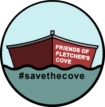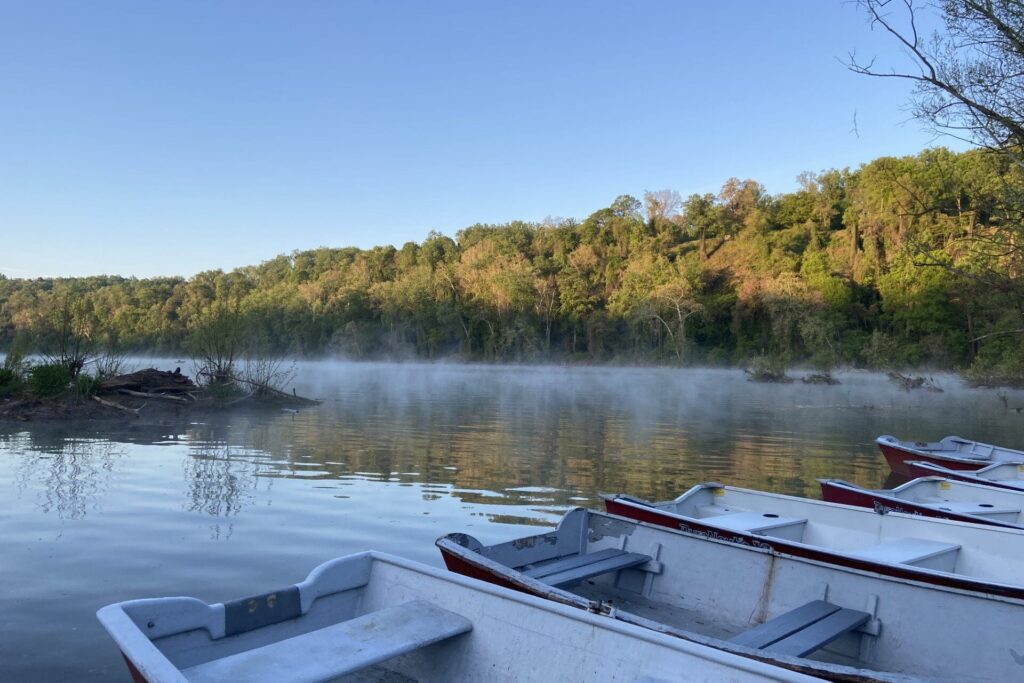By Chris Wood, originally posted in Trout Unlimited’s Digital Magazine.
“Griz” leaned on the counter of the boathouse and asked: “What was Ray and Joe Fletcher’s Dad’s name. Was it… Julius?”
Dan, who has worked at Fletcher’s Cove since 1969 and worked for Joe and Ray Fletcher—the fourth generation of the Fletcher family to run the concession along the Potomac River in Washington, D.C, looked across the counter at Griz and nodded his head.
Griz went on: “Well my dad was good friends with their dad, Julius.”
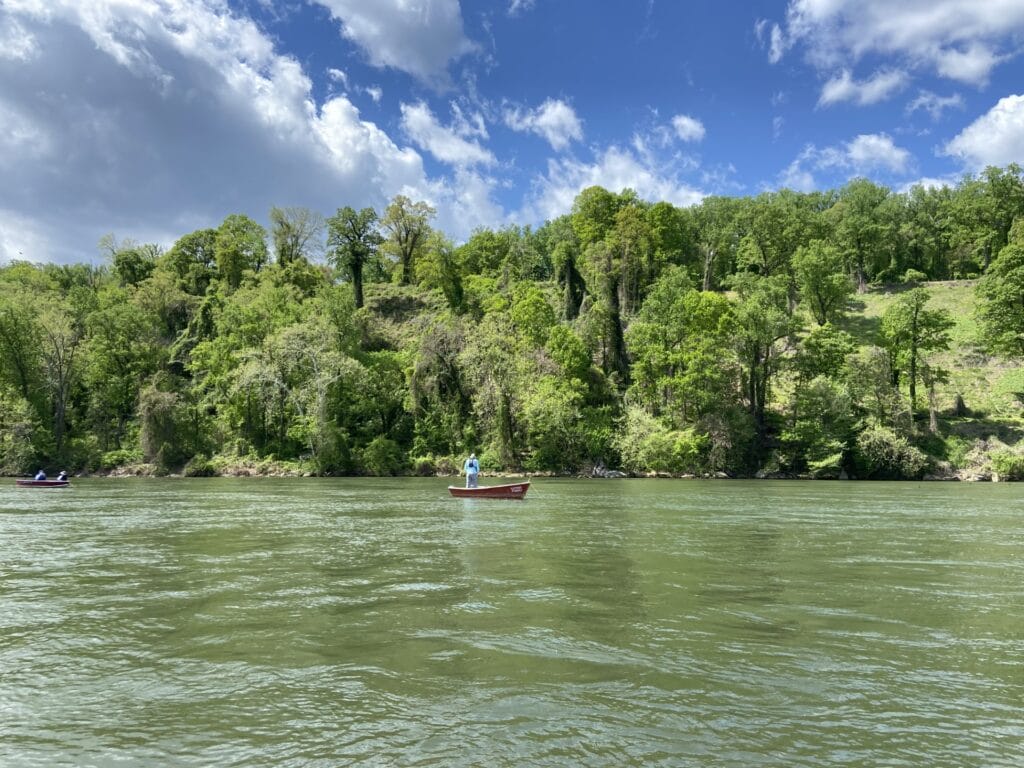
In 1942, the flood was so high, everyone had to abandon their houses along the river. But Julius’ wife wouldn’t leave because she had a new icebox in the kitchen. So, my dad went over and helped to move the icebox up along the towpath where he lashed it down where it was safe from the flood. She finally relented and left the house.”
We all laughed at Griz’s story. Griz, who works at the District Angling fly shop in Arlington, Virginia (they are a TU business. Check them out), walked down to the river to get in his rented wooden rowboat and cast for shad.
Dan watched him walk away with a pensive look in his eye and said: “I worry that we are at risk of forgetting all of the history from this area.” He went on to tell me about the Italian stonemason community who lived on the Virginia side of the river across from the boathouse.
Dan pointed out that the indentation across from Walker’s Point at the downstream end of the Cove was caused by the stonemasons’ blasting. Along the shore, buried in the woods, is a steel shelter that the workers would run to when the blasting began.
They must have been tough, as the Virginia side of the Potomac along Fletcher’s Cove is a very, very narrow band of land beneath steep hills. Flooding must have been a constant nuisance and threat.
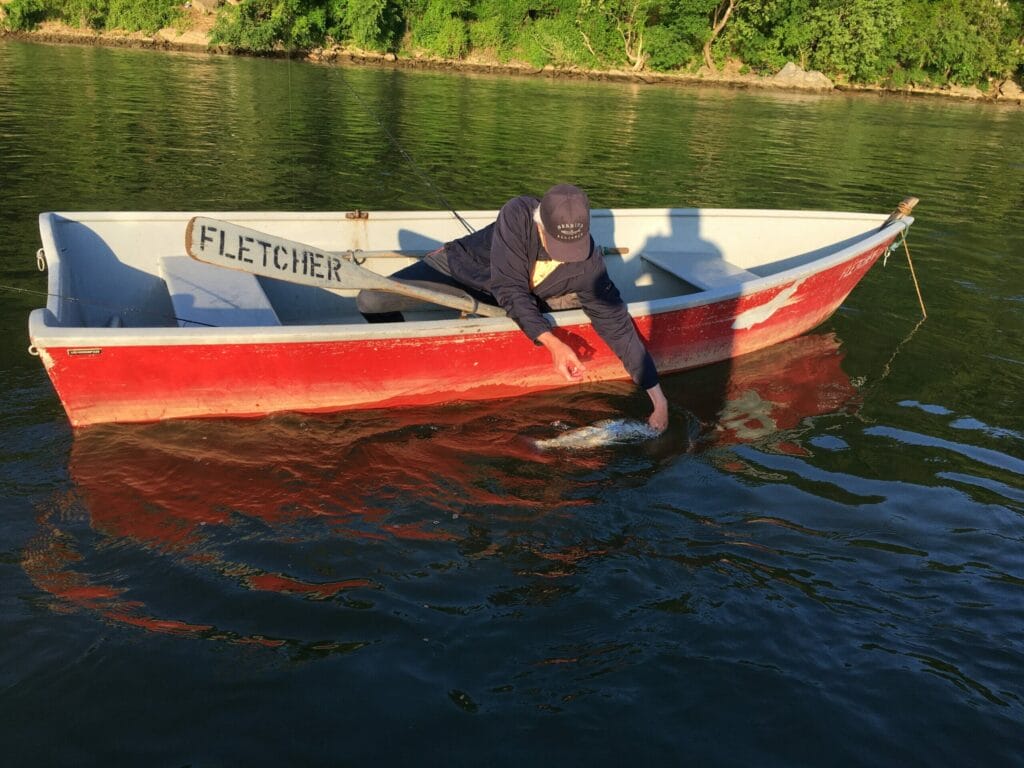
Beyond fishing
My friend, Keith Curley, who started with me as an intern 20 years ago and now leads TU’s eastern conservation work, and I walked down to the river and set out for our own shad expedition. Fish were caught. More importantly, we talked about the growth of the organization and our aspirations for the future of TU.
Fletcher’s Cove is among the finest urban fisheries in the country. Anglers ply its waters for white perch in February. Really big striped bass then follow the forage fish up from Chesapeake Bay. In March, the hickory and American shad appear––“poor man’s trout” or “poor man’s tarpon;” when the shad hit a fly or dart and get into the strong current of the Potomac’s spring freshet, Katy-bar-the-door.
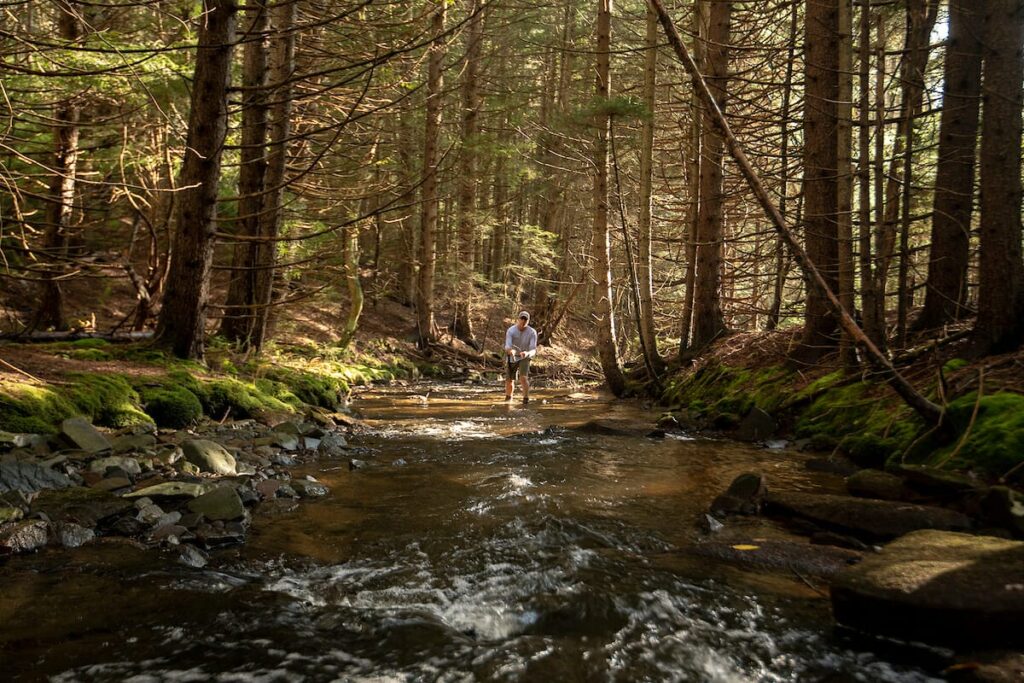
Most anglers in the area stop fishing after the shad run ends in late May, but schoolie stripers remain and are willing to hit a streamer or plug. Smallmouth bass are a constant threat to attack a fly or lure. And when the summer begins, a few of us target native longnose gar that suspend in the water column, imitating logs (so we think), and will violently attack rope flies. The tricky part of the process is unhooking them without losing a finger.
Blue catfish have invaded the Potomac and will eat cut bait or a sunken Clouser minnow with fury. Happily, fishermen are now commercially fishing for invasive blue cats in the Chesapeake, and if we know how to do anything, it is how to overfish a commercial stock.
This part of the Potomac is a warm water fishery, and Trout Unlimited is all about caring for and recovering cold water resources. To be certain, TU has worked with over 400 landowners and farmers in the headwaters of the Potomac, and recovered its headwaters with such effect that we are documenting 16-inch native brook trout in restored areas.
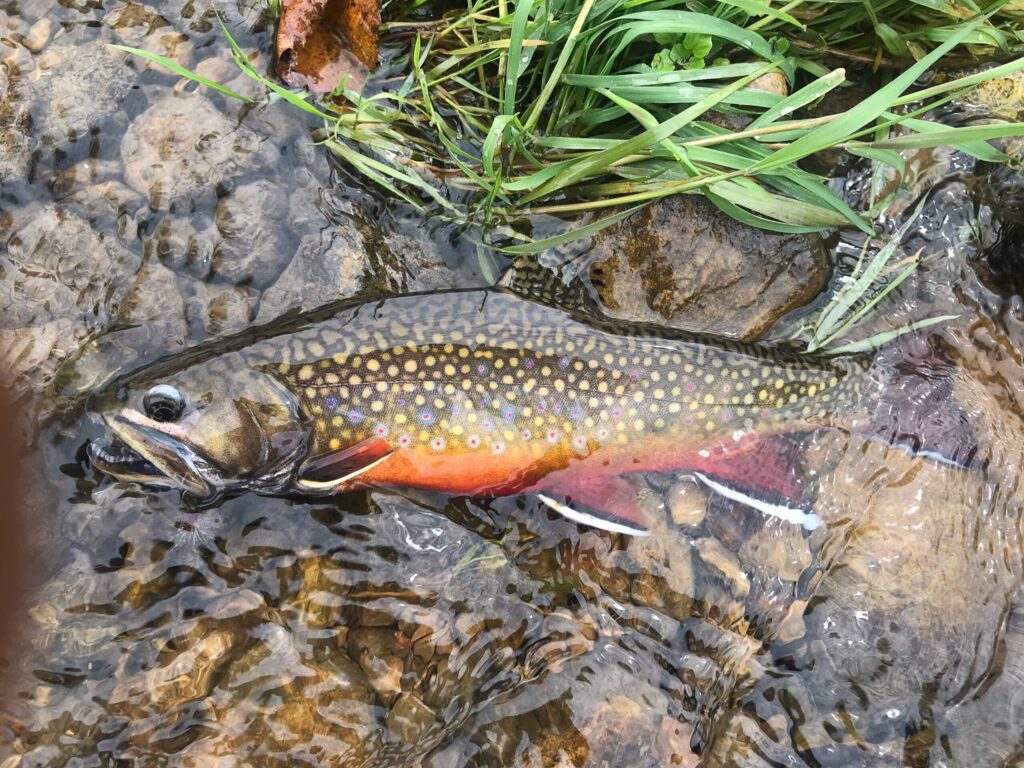
Whether you cast in mountain streams for native brookies or bounce jigs for big stripers, fishing is as much about people as fish. Whether you flyfish or cast plugs (and I do both), you find yourself in a beautiful spot watching cormorants and osprey hunt from the air or the water.
Rowboat diplomacy
I fish the Potomac with members of Congress, colleagues from TU and other conservation organizations, an occasional cabinet member and agency officials. Everyone marvels at the beauty and wonder of the nation’s river.
My former colleague and friend, Steve Moyer, used to call this “rowboat diplomacy.” I use these trips to advocate for strengthening the Clean Water Act, protecting Bristol Bay, passing Good Samaritan legislation and, of course, to have fun.
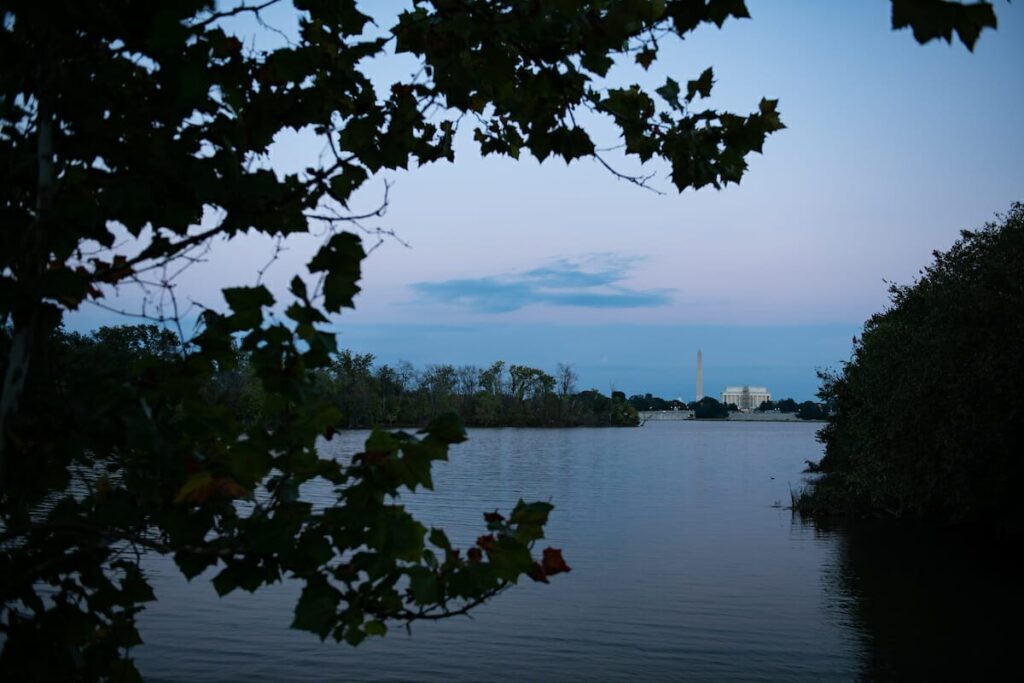
In the end, however, conservation is less about the issues than it is the people.
Griz, for example, volunteers every year with the Tri-State youth camp to train the next generation of conservationists. Danny is the resident historian and perhaps the most articulate advocate for the Potomac. Keith’s staff spearheads our work on the trout waters of the Upper Potomac. Two of the Senators I took out for shad agreed to support a bill that makes it easier to clean up abandoned hardrock mines (we now have 36 co-sponsors in the Senate—half Democratic and half Republican).
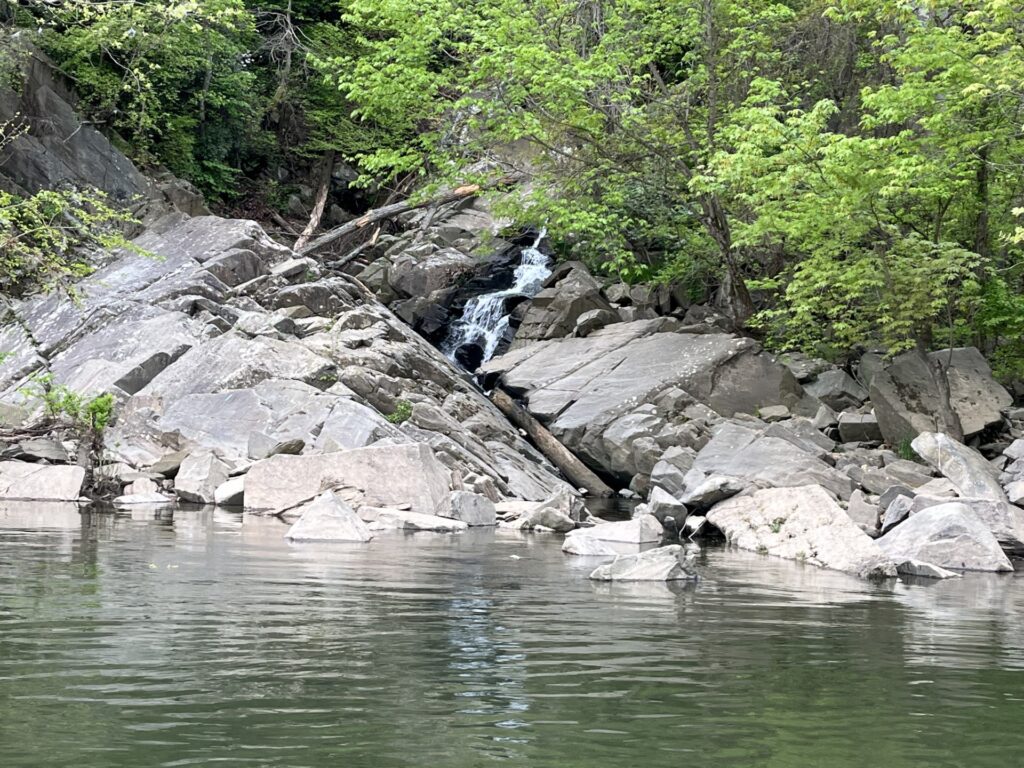
Whenever we teach a kid to fish at a TU youth camp or take a group of teenagers to plant trees at a TU project or help a veteran to heal with time on the water, we reknit our bonds with one another and with the waters that sustain us.
Some might say that in the grand scheme of things, fishing is unimportant. I respectfully disagree and think it’s more important now than ever.
